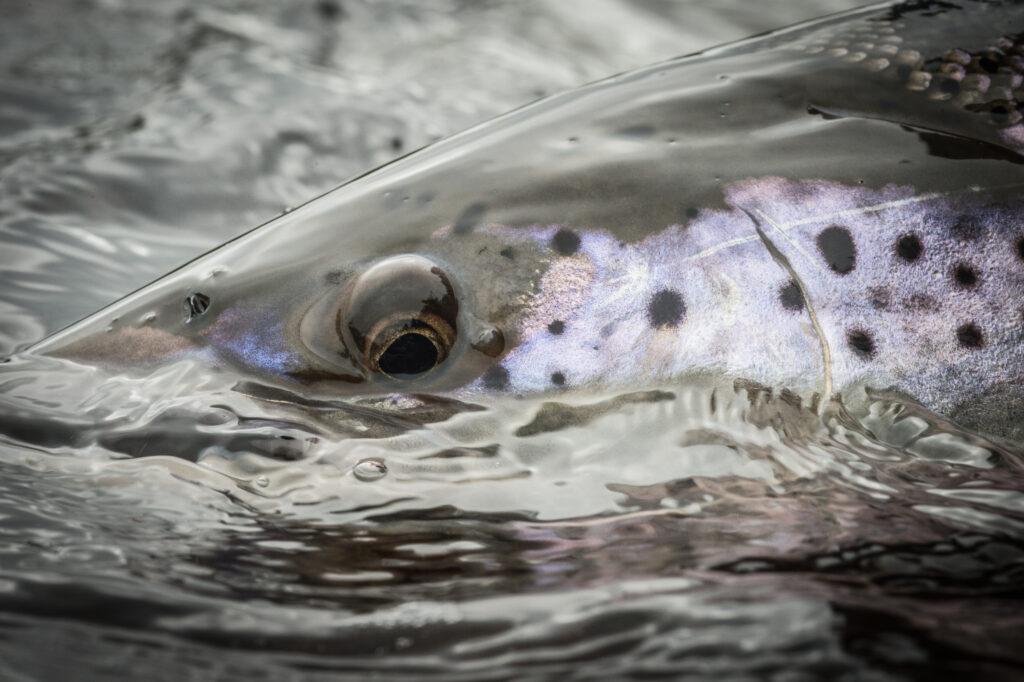
The future of wild Atlantic salmon and wild rivers depends largely on the decisions of government. Advocating for positive change is one of ASF’s most important responsibilities.
Learn more about our current priorities below:
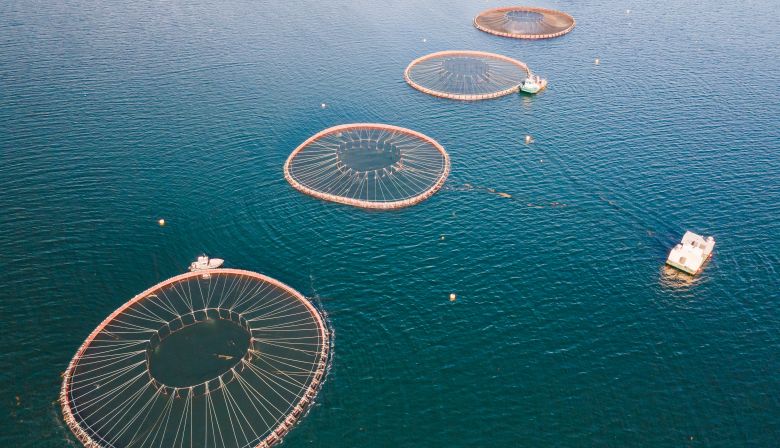

The future of wild Atlantic salmon and wild rivers depends largely on the decisions of government. Advocating for positive change is one of ASF’s most important responsibilities.
Learn more about our current priorities below:
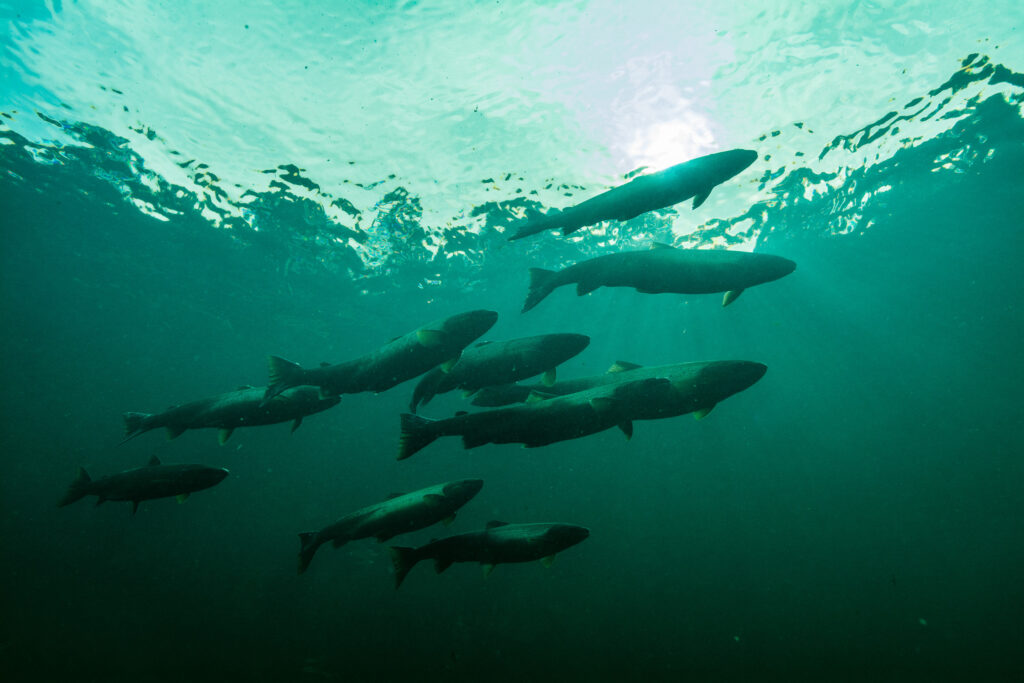
A recent report on Atlantic salmon from Canada’s Parliamentary Standing Committee on Fisheries and Oceans stated that “several witnesses pointed to DFO’s lack of capacity in science and leadership in providing a comprehensive salmon recovery plan”.
As a result, federal policy initiatives to conserve and restore wild Atlantic salmon have largely failed to achieve their stated goals. To address this, in his 2020 mandate letter to the Minister of Fisheries and Oceans Canada, Prime Minister Justin Trudeau directed the department to create and implement a Wild Atlantic Salmon Conservation Strategy.
This will be analogous to Canada’s Pacific Salmon Strategy, announced in 2021, with $637 million CAD in funding included.
ASF has been in consistent contact with the Minister and her staff, and we are coordinating with other conservation NGOs to ensure the government receives clear and consistent messages. We are seeking a portion of the money from the strategy to fund our programs like Wild Salmon Watersheds.
It is our understanding that Canada’s Wild Atlantic Salmon Conservation Strategy will be completed and announced in 2024.
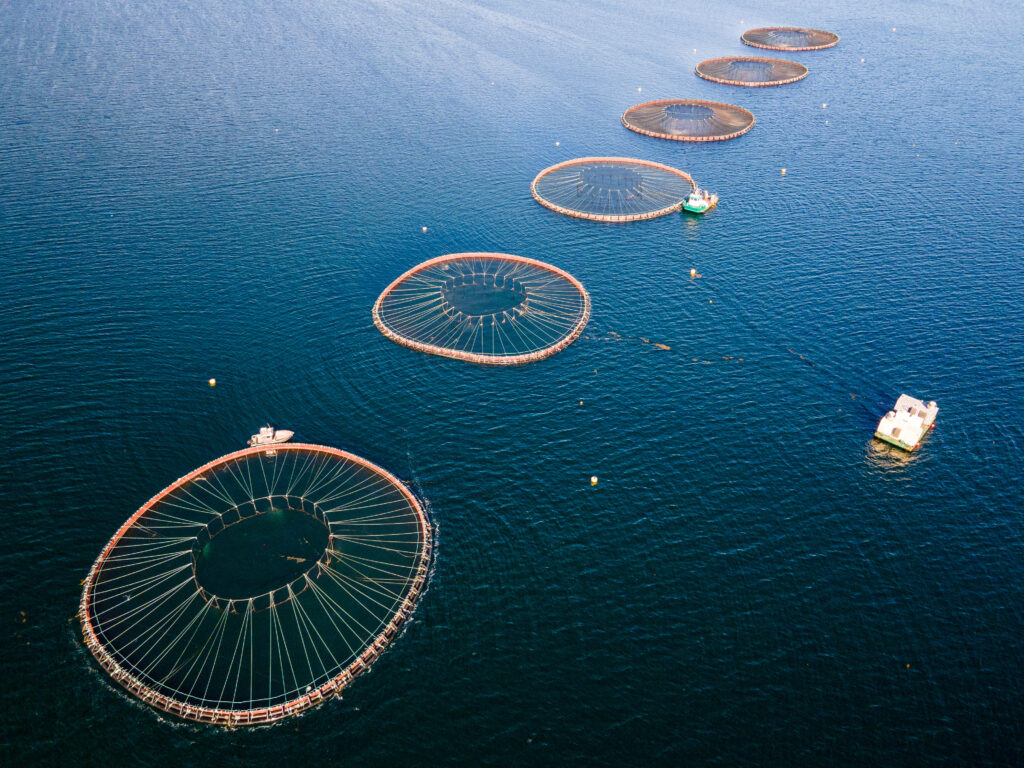
Wherever open net-pen salmon aquaculture exists in Maine and Atlantic Canada, adjacent wild salmon populations are considered threatened or endangered.
The industry is wracked by disease and parasites which spread to wild fish and the environment. It also suffers large and small fish escapes resulting in well-documented interbreeding between wild and domesticated animals, a contributing factor to population collapse.
ASF advocates to provincial and federal governments to protect wild fish and the environment from the negative effects of open net-pen salmon aquaculture. We are also working to build public support for the following three objectives:
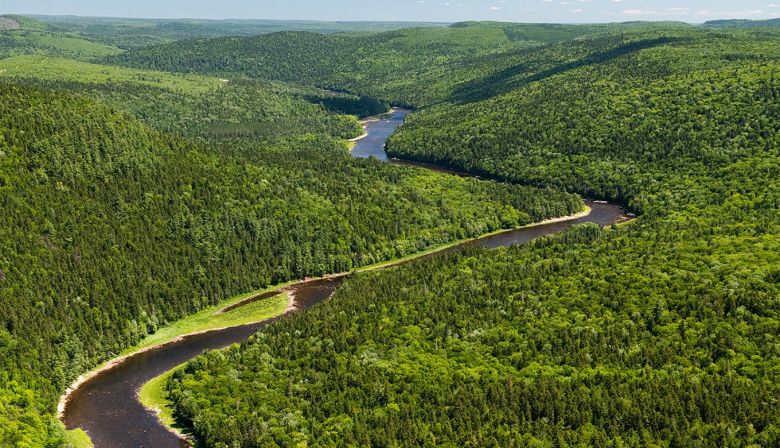
Governments around the world including in Canada and the United States have set ambitious targets for protecting nature and animals from the harmful effects of human development and, in particular, climate change. In Canada for example, the federal government has pledged to protect 30 per cent of the country’s land and freshwater, and 30 per cent of our territorial seas by 2030, a goal known as 30×30.
ASF and our partners will advocate for new protected areas to surround Atlantic salmon rivers. We have already had success in New Brunswick, where the provincial government recently announced significant new protected areas in the Miramichi, Restigouche, and other important Atlantic salmon watersheds.
We have a modern vision for protection. ASF recognizes that people who are connected to the land and water care most about its future, and conservation takes people who care. Therefore, protected areas should encourage and enhance sustainable outdoor experiences like hiking, canoeing, hunting, fishing, and foraging.
Advocating for land and water protections is central to the fight against climate change impacts to Atlantic salmon. Rivers are the products of their surrounding landscapes, and intact, healthy forests create resiliency to extreme weather and associated impacts to rivers. Protecting forests is critical to helping Atlantic salmon be resilient to a changing climate.
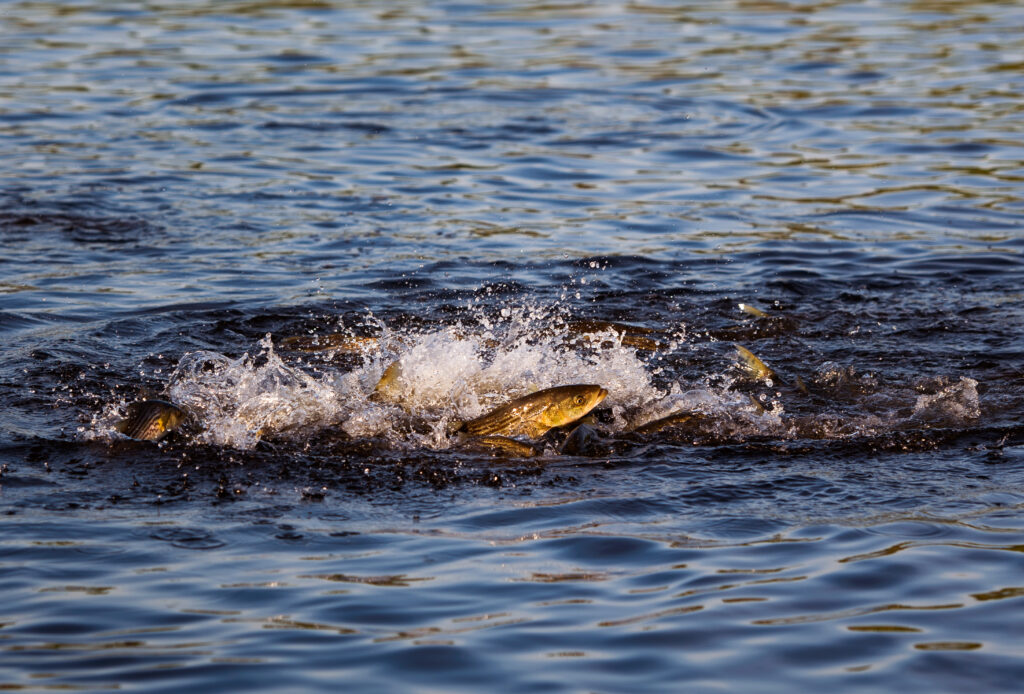
The impact of striped bass on Atlantic salmon and the ecosystem at large in the Southern Gulf of St. Lawrence region has been a significant and increasing concern in recent years. In the late 1990s, striped bass had a population level of only 3,000-5,000 spawners. Fisheries and Oceans Canada (DFO) implemented several fisheries management measures aimed at recovering the population, which consequently increased exponentially over the course of 25-30 years. However, Indigenous communities and conservation organizations are highly concerned about the abundance of striped bass and an imbalanced ecosystem, particularly with Atlantic salmon. Atlantic salmon smolt survival on the Miramichi and subsequent adult returns have declined significantly during this growth period of striped bass.
Devastating predation impacts occur as salmon smolt pass through hundreds of thousands of striped bass in a concentrated area on their way to the Gulf of St. Lawrence and beyond. ASF and partners have advocated hard to DFO for the development of the precautionary approach management framework, which establishes reference points, sets targets, and helps guide management decisions. DFO has made progress on this. However, according to DFO’s targets, the population is currently considered to be low. This could lead to DFO putting more protections on striped bass.
Through our tracking program, ASF has generated a valuable dataset needed to carry out advocacy on striped bass management. We remain focused on our objective to conserve wild Atlantic salmon and find balance in the ecosystem between striped bass and other key stocks like smelt and gaspereau, while allowing a sustainable future for the native striped bass population. ASF will continue to work with strategic partners to aggressively pursue improvement to striped bass management.
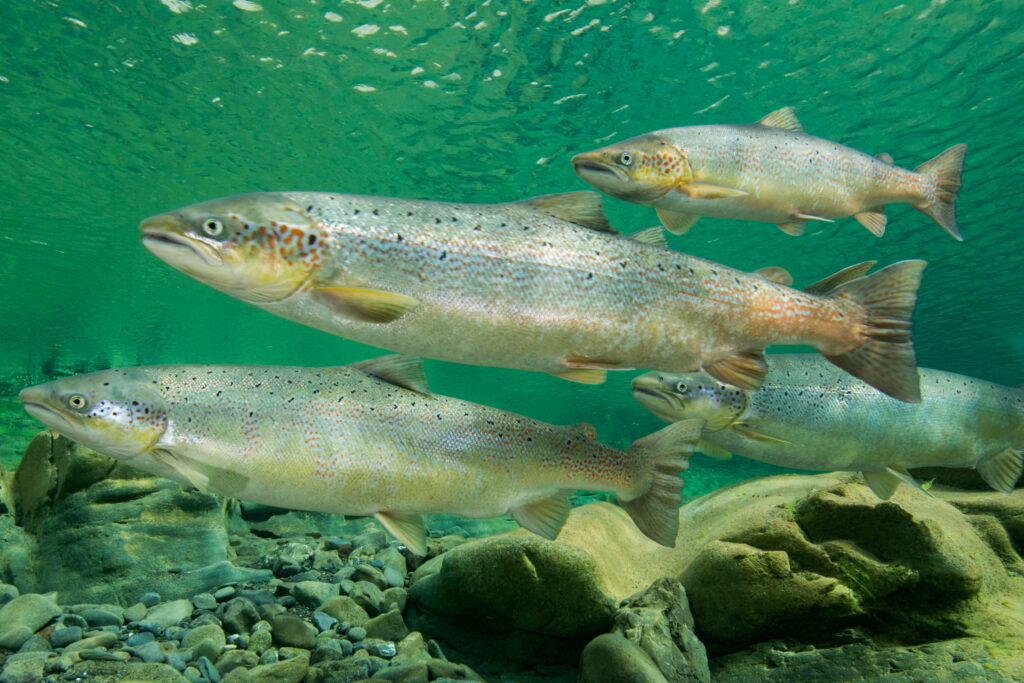
Fisheries and Oceans Canada (DFO) is moving toward a river-specific management approach to Atlantic salmon fisheries in most regions of eastern Canada. The transition from their traditional broad-brush approach is consistent with DFO’’s move across Canada to manage all fisheries using the Precautionary Approach framework. In essence, this means angling regulations and harvest will be determined based on the health of a salmon population in any given river. The healthier the salmon population, the more angling opportunities there are.
While ASF is supportive of DFO managing fisheries at the river scale, we recognize this needs to be coupled with an investment in population assessment on many more rivers to support sound decision-making. This management system does not address root-cause threats to salmon such as poaching, invasive species, excessive predation, etc. The Precautionary Approach framework is solely designed to regulate fisheries, including gear type, season length, closed times, warm water protocols, harvest limits, and daily catch and release limits.
The federal and provincial governments, along with Indigenous organizations and NGOs, including ASF, are currently participating in a working group led by DFO to create a pilot program on the Miramichi watershed in the Gulf Region. Once trialed, the aim is to take learnings from the pilot and implement river-specific management on other rivers throughout the Gulf Region.
ASF opposes adding more sub-populations of Atlantic salmon to Canada’s Species at Risk Act. Our first-hand experience with the legislation has shown it to be ineffective and illogical; permitting serious threats to persist while adding layers of red tape for groups trying to conserve and restore vulnerable populations.
In 2021, ASF made a submission to Fisheries and Oceans Canada opposing the potential addition of nine sub-populations to the act. The department lacks the data to make good decisions, and the capacity to design and implement effective recovery plans.
ASF is confident that DFO and other federal agencies already have the legislative and regulatory tools to address some of the root causes of Atlantic salmon decline but fail to take any action. Listing more sub-populations under the Species at Risk Act will alienate people who care and consume limited resources in process and paperwork.
We will actively oppose new listings and work to build public support for our position.

Neville Crabbe is ASF’s Executive Director of Communications and Marketing. He started at ASF in 2016 after working as a multi-media journalist in Nunavut and New Brunswick. Neville leads our conservation campaigns and manages ASF’s communications. He lives in Saint John, New Brunswick.